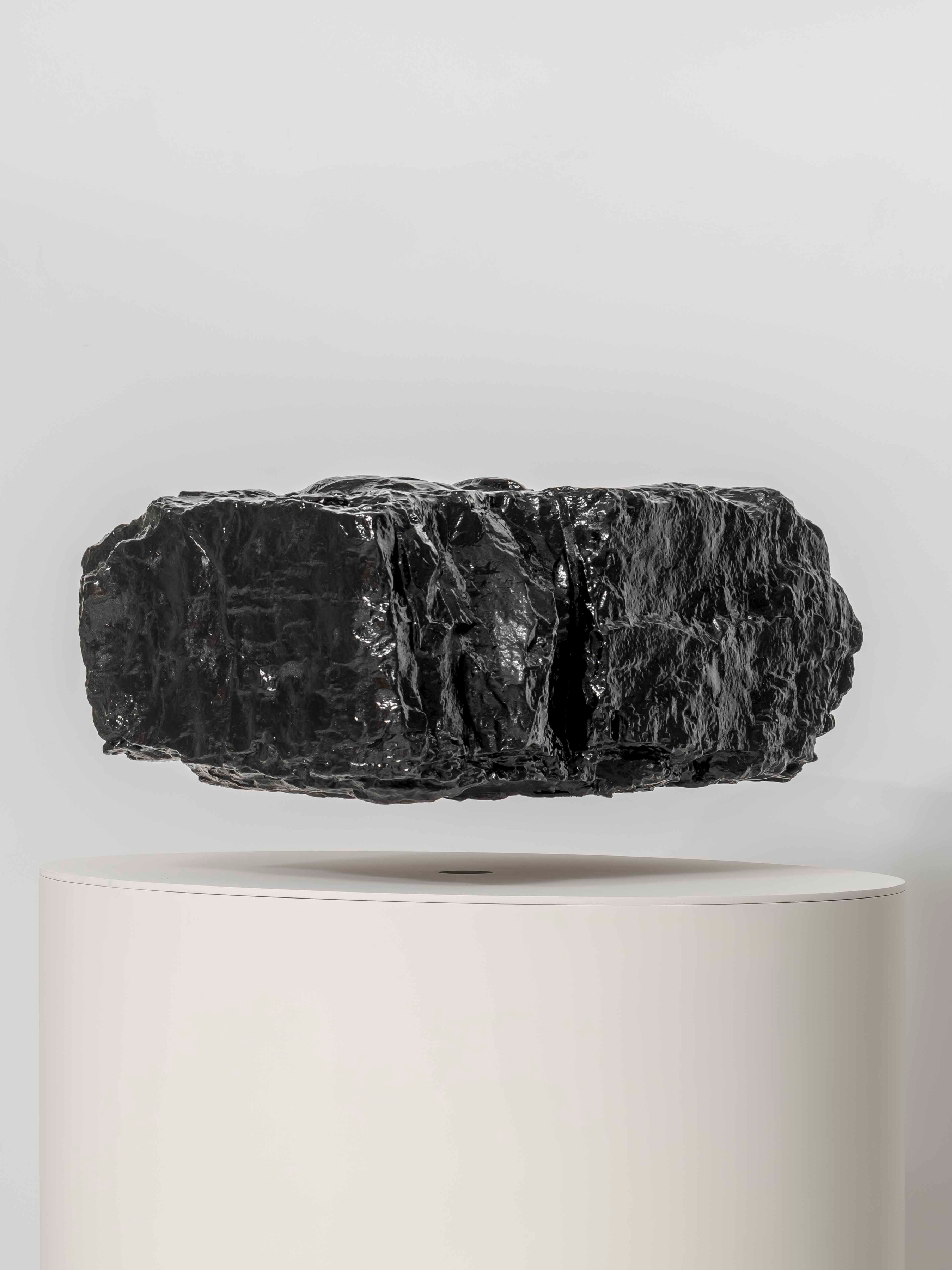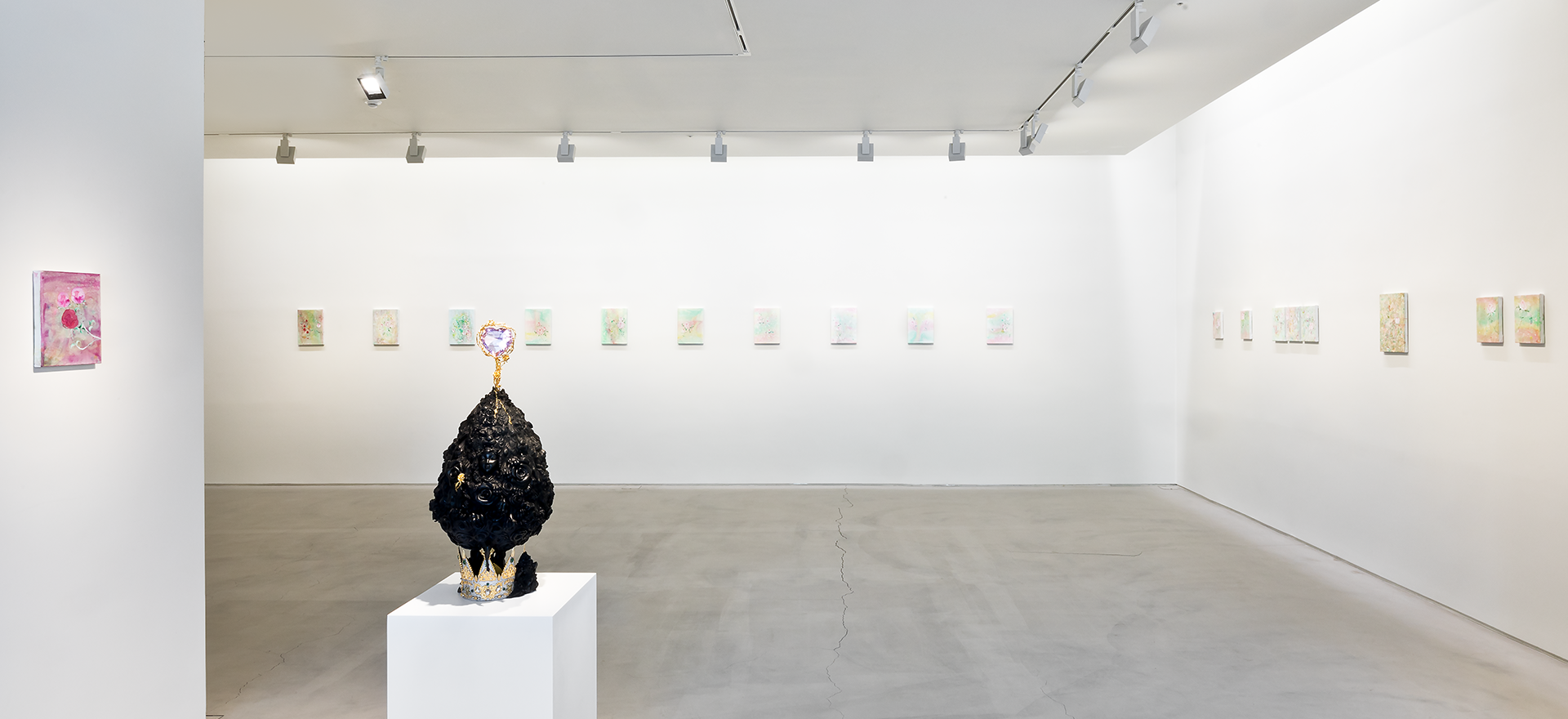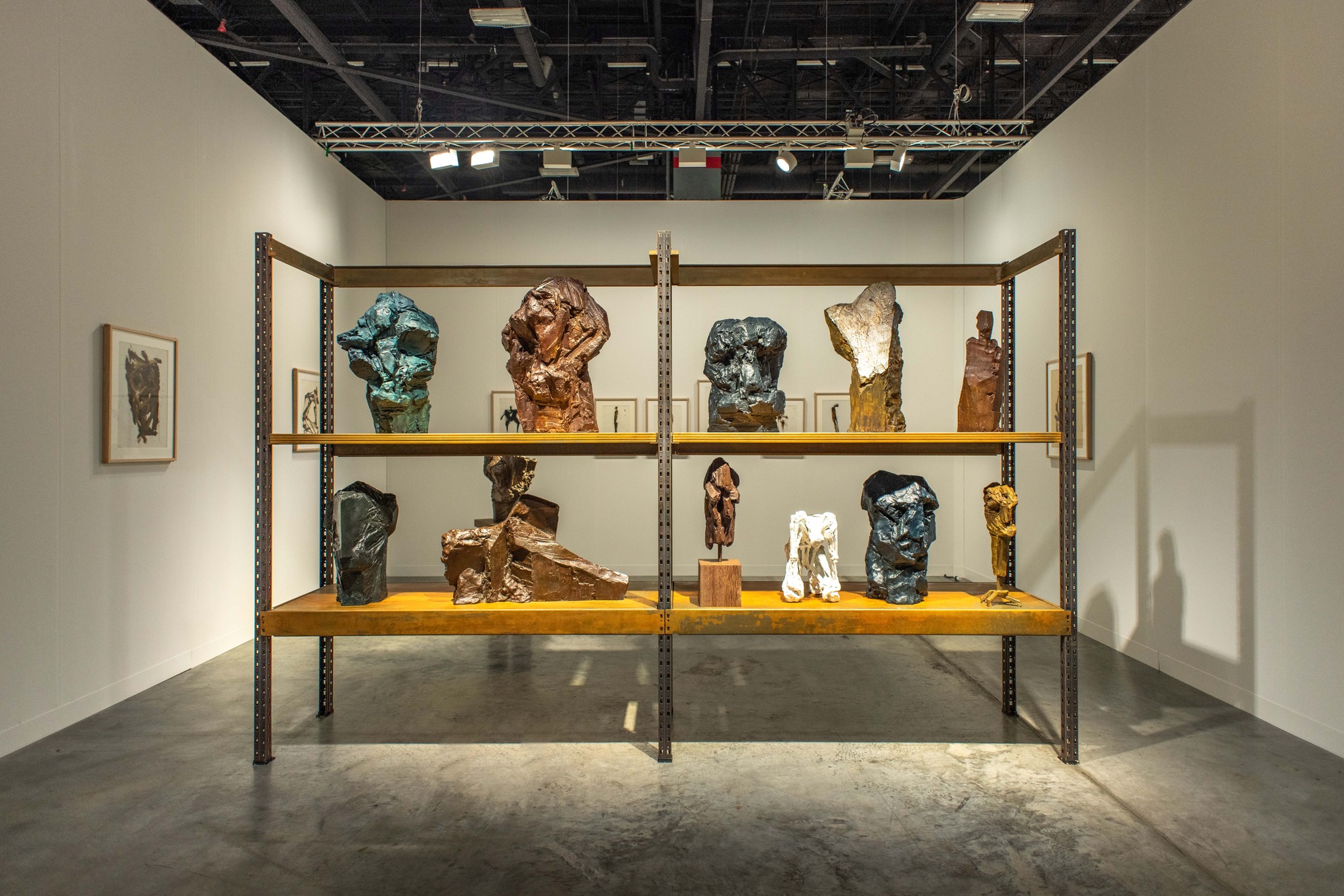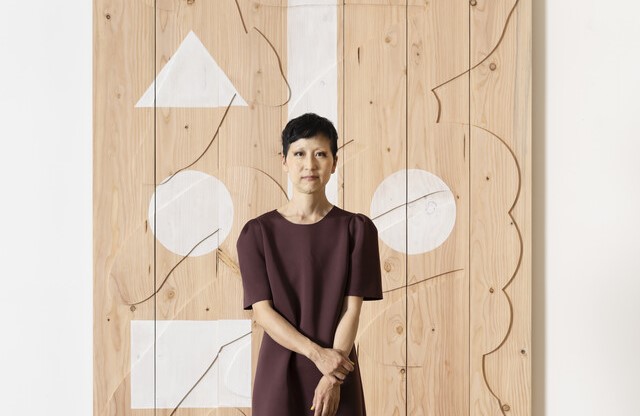Koo Jeong A (b. 1967) captures the fleeting qualities of everyday scenes and objects around the world, bringing forth the poetic aspects of ordinariness in her work, which continues to gain international recognition. Her art spans various media, including poetry, fiction, installation, sculpture, painting, moving images, music, and architectural projects, transcending the boundaries between reality and unreality, existence and non-existence.
 Koo Jeong A, Dr.
Vogt, 2010 ©Art Sonje Center
Koo Jeong A, Dr.
Vogt, 2010 ©Art Sonje CenterKoo meticulously arranges and connects
minor elements within everyday spaces to create poetic atmospheres. For
example, in her 1998 work Oslo, she subtly
transformed the space using only light streaming through a window and white
powder.
The materials she employs are often ordinary
and trivial. The white powder in Oslo was, in fact,
crushed aspirin, one of the most commonly consumed medications. Additionally,
Koo brings ordinary and fragile materials like crumpled paper, discarded toys,
and cigarettes into unexpected contexts, turning them into art.
 Koo Jeong A, Dr.
Vogt, 2010 ©Art Sonje Center
Koo Jeong A, Dr.
Vogt, 2010 ©Art Sonje CenterShe also uses intangible elements such
as sound and light to create surprising compositions in everyday spaces. For
instance, her work with an old tree at the Venice Biennale in 2009 blended
seamlessly into its surroundings, unnoticed until viewers approached and heard
its subtle trembling and humming sound.
In her 2010 installation Dr.
Vogt, Koo transformed the entire space with a pink floor that
radiated fluorescent pink light. She combined this with blue pen drawings on
photographic paper, creating an experience where the gallery's light and the
pink floor caused visual disorientation. Koo achieves these unfamiliar visual
and perceptual experiences using simple combinations of light, color, and
paper, without relying on complex machinery.
 Koo Jeong A, Otro,
2008-2014 ©François
Lichtlé for L'Escaut Architectures
Koo Jeong A, Otro,
2008-2014 ©François
Lichtlé for L'Escaut ArchitecturesIn 2012,
Koo gained global attention with the debut of her public art project series ‘Skate
Park.’ Collaborating with the French government, she aimed to transform the
island of Vassivière, a declining town in southern France, into a vibrant space
for young people by creating the first ‘Skate Park.’
She
envisioned the skate park as a space where children visiting museums or
galleries in Vassivière wouldn't get bored but instead engage with others and
enjoy themselves. Thus, she transformed a neglected, unused area into a skate
park coated with glow-in-the-park paint. Koo’s skate park absorbed sunlight
during the day and emitted light at night, offering an extraordinary experience
within an ordinary space.
 Koo Jeong A, OooOoO,
2019 ©Triennale Milano. Photo: Gianluca Di
Ioia
Koo Jeong A, OooOoO,
2019 ©Triennale Milano. Photo: Gianluca Di
IoiaThis project expanded globally over the following decade, featuring at the Liverpool Biennial in 2015, the São Paulo Biennial in 2016, and the Milan Triennale in 2019, with each installation tailored to the unique characteristics of its location.

Koo Jeong A, Density, 2019 ©Acute Art
Koo also
explored augmented reality (AR) technology with her 2019 work Density, transforming
existing drawings into immaterial forms. Starting from daily drawings created
between 2005 and 2006, Density used a
smartphone AR app to display floating ice fragments in real-world spaces.
Continuing her tradition of making the mundane appear unfamiliar, this work
used AR technology to merge reality and unreality, inviting viewers into a new,
hybrid space.
 Koo Jeong A, Density,
2023 ©PKM Gallery
Koo Jeong A, Density,
2023 ©PKM GalleryDensity was later reimagined as
tangible material sculptures in a solo exhibition at PKM Gallery in 2023. The levitating
ice fragments entered the physical realm through the power of magnets, blurring
the lines between reality and unreality, material and immaterial.

“KOO JEONG A - ODORAMA CITIES”, Korean Pavilion 2024, La Biennale di Venezia, Installation view. Photo: Mark Blower. ©Pilar Corrias, London, and PKM Gallery, Seoul
Selected as the artist for the
Korean Pavilion at this year's Venice Biennale, Koo Jeong A presented a
sculptural installation that evokes memories of home through "scent."
Scent has been a recurring element in her work since 1996, functioning as a
medium that transcends boundaries and evokes the audience's memories and
emotions.
Koo collected survey responses on
"scent memories related to Korean cities or hometowns" from people
around the world, including both South and North Koreans. From over 600
personal accounts, she selected 16 to create corresponding scents, capturing
memories like the smell of city air, night air, people, saltiness, and public
bathhouses. These scents permeated the Korean Pavilion and the bodies of audiences
through diffuser sculptures.
Simultaneously, the diffuser
sculpture KANGSE SpSt echoes the concept of
"OUSSS," a mysterious, universal entity she has developed since the
1990s. "OUSSS" is an enigma, a flexible being that transcends
boundaries, transforming into anything—word, morpheme, material, or state of
mind.

Koo Jeong A, MYSTERIOUSSS, 2017 ©Koo Jeong A
By utilizing elements like scent, light, temperature, and sound, which lack clear boundaries and are often invisible, Koo Jeong A transforms the ordinary into something poetic and strange, eliciting intimate and subtle experiences. Within her work, viewers are invited to transcend the boundaries around them and imagine another world beyond the surface of reality.
"Art creates coexistence and a
shared future. It communicates more through various senses. The public nature
of my work, like the skate park installations realized through sculptures,
light, and space, draws inspiration from the phenomenon of light emission.
The new and the unknown cannot be
easily predicted based solely on past experiences, so thinking beyond fixed
ideas is always necessary. Many fictions can perhaps be understood as multiple
universes surrounding reality." (Vogue, Interview with Koo Jeong A,
February 20, 2024)

구정아 작가. 사진: 김제원 ©PKM 갤러리
Koo Jeong A held solo exhibitions at
Kunsthalle Düsseldorf (Düsseldorf, Germany, 2012), Dia Art Foundation, Dia:
Beacon (Beacon, USA, 2010), and Centre Pompidou (Paris, France, 2004) and
gained her international stature. She participated in various group shows
including Venice Biennale (2014, 2009, 2003, 2001, 1995), Liverpool Biennale
(2010), Busan and Gwangju Biennale (2020; 2014, 2002, 1997), The Guggenheim
Museum (New York, USA, 2010, 2004, 2002), the Fondation Louis Vuitton (Paris,
France, 2015), and National Museum of Modern and Contemporary Art Korea (Seoul,
Korea, 2015).
Koo was a finalist for the Hugo Boss
Prize in 2002, won the Hermes Korea Prize for contemporary art in 2005, and was
named as ‘2016 artist of the Year’ by the Korean Cultural Centre UK. Koo Jeong A is
currently preparing for solo exhibitions at several prestigious venues,
including Malmö Konsthall (2024), the Neue Nationalgalerie (2024), Haus der
Kunst (2025), and the Aspen Art Museum (2026).






















